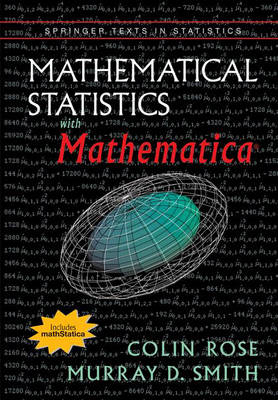Springer Texts in Statistics
1 total work
This path-breaking book presents a unified approach for doing mathematical statistics with Mathematica. The included mathStatica software builds upon Mathmatica's symbolic engine to create a sophisticated toolset specially designed for doing mathematical statistics. With mathStatica, students can easily solve difficult statistical problems, while the professional statistician will be able to tackle tricky multivariate distributions, generating functions, inversion theorems, symbolic ML estimation, unbiased estimation, etc. The mathStatica software is wonderfully easy to use, and yet so powerful that it can find corrections to mainstream reference texts and solve new problems in seconds. This book is the ideal companion for researchers and students in statistics, econometrics, engineering, physics, psychometrics, economics, finance, biometrics, and the social sciences, across both the pure and applied domains.
The book contains two cross-platform CDs, which run on Windows, Mac, Linux, and most flavours of Unix: CD 1-mathStatica CD-ROM containing: MathStatica: The Application Pack for mathematical statistics; live interactive book that is identical to the printed text; hundreds of live examples, animations and illustrations; custom Mathematica palettes CD2-Mathematica v4 (trial CD): for readers who are new to Mathematica. MathStatica replaces dozens of reference works, extending analysis to problems of arbitrary high order. Its features include: a complete suite of functions for manipulating probability density.
The book contains two cross-platform CDs, which run on Windows, Mac, Linux, and most flavours of Unix: CD 1-mathStatica CD-ROM containing: MathStatica: The Application Pack for mathematical statistics; live interactive book that is identical to the printed text; hundreds of live examples, animations and illustrations; custom Mathematica palettes CD2-Mathematica v4 (trial CD): for readers who are new to Mathematica. MathStatica replaces dozens of reference works, extending analysis to problems of arbitrary high order. Its features include: a complete suite of functions for manipulating probability density.
